Key Takeaways
- The impact of a snapshot extends beyond the frame, capturing the essence of cycling history.
- Each iconic photo is a time capsule that narrates the milestones of cycling legends.
- The emotional journey in these pictures resonates with us, sharing stories of human endeavor and spirit.
Imagine the rush of wind, the blur of the landscape, and a moment frozen in time.
That's the power of an iconic cycling photo.
What's the story behind the snapshot that stopped your scroll?
Cycling isn't just about the race, it's about the stories told through snapshots immortalized over the decades.
From Merckx's grueling hour to Froome's unexpected run, each photo carries a tale.
Trust us to take you on a pedal-powered journey down memory lane.
Picture the drama of competition, the agony of defeat, and the sheer joy of victory—all captured in a split second.
These photos don't just show us the race; they take us along for the ride.
Eddy Merckx's Hour Record (1972)

Have you heard about Eddy Merckx’s astonishing ride in Mexico City?
It's 1972, and this cycling legend is about to make history.
Picture this: the high altitude of 2,300m is challenging enough, but Merckx is not just any cyclist.
He's about to pedal his way into the record books.
On that day, Merckx set a new Hour Record, covering 49.431 km (30.715 mi).
Now, let’s put that in perspective:
- Altitude: 2,300m (7,550 ft)
- Distance: 49.431 km (30.715 mi)
- Venue: Mexico City
It wasn't a walk in the park, far from it.
With each lap, Merckx demonstrated why he was nicknamed "The Cannibal." He devoured the competition and the record that had stood for years.
Just imagine Merckx on the velodrome, his face a portrait of focus and effort, riding into immortality.
That image itself has become iconic in the world of cycling.
Here's how the record-breaking ride went down:
- Kilometer 2: Completed in 1 minute 9.84 seconds
- Kilometer 5: 5 minutes 55.7 seconds – already 14 seconds ahead of the previous record
Merckx's achievement stood unrivaled for 12 years.
Think about that.
A whole dozen years passed before his record was broken.
Doesn't that just blow your mind?
So next time you see the photo of Merckx in the Mexico City velodrome, remember the sheer willpower and physical strength it took to get there.
It's a moment frozen in time, a snapshot of true sporting greatness.
Remember, it’s not just a man on a bike; it's Eddy Merckx making history.
Fausto Coppi and Gino Bartali Sharing a Water Bottle (1952)
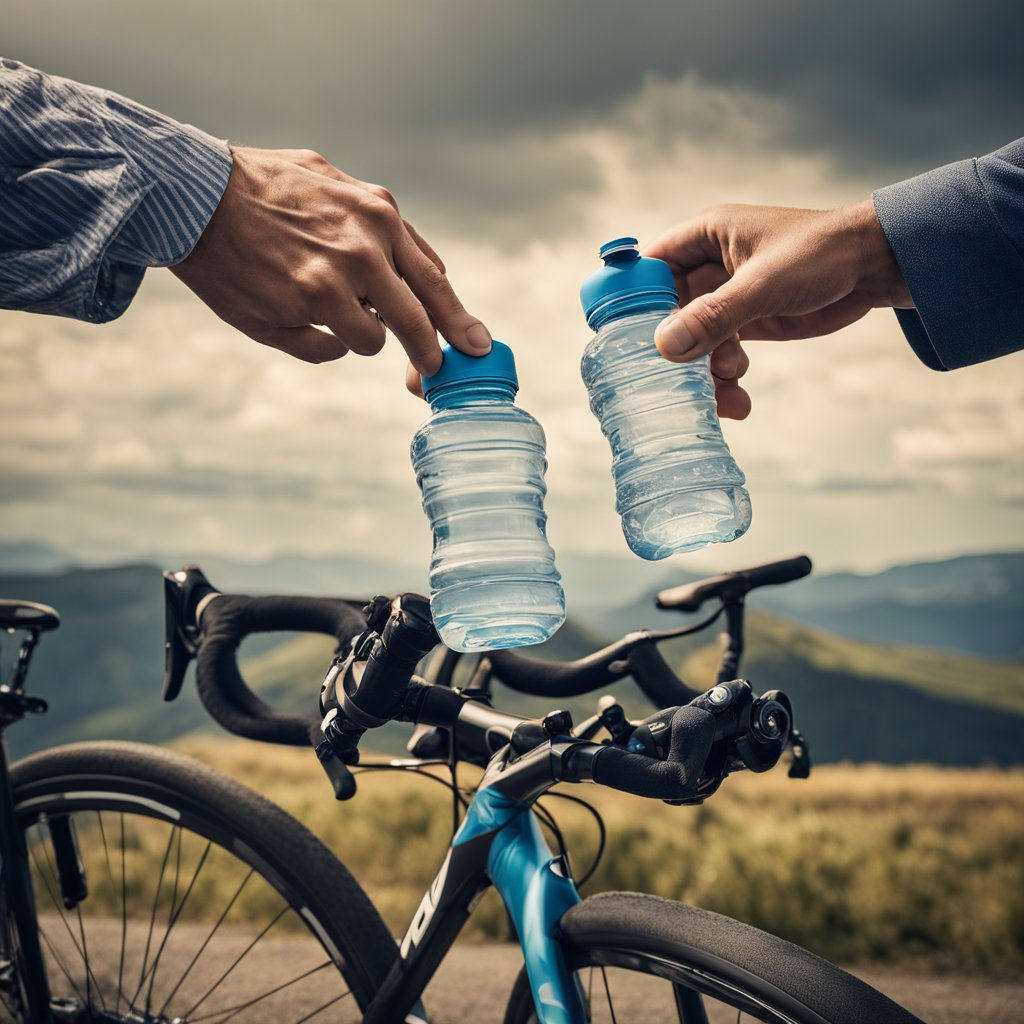
Have you ever witnessed a moment that just seems to capture the essence of a rivalry and respect, all in a single frame?
That's exactly what happened during the 1952 Tour de France when arch-rivals Fausto Coppi and Gino Bartali were caught on camera in a simple act that became an iconic symbol of sportsmanship.
They were sharing a water bottle amidst the relentless competition of one of cycling's most demanding races.
The Scene:
- Race: 1952 Tour de France
- Stage: Lausanne to Alpe d'Huez
- The Characters: Fausto Coppi, Gino Bartali
Picture this: Fausto Coppi, the younger challenger and extraordinary talent, is ahead.
Gino Bartali, the seasoned champion known for his endurance, is right there with him.
It's intense, yet, as they ascend the grueling climb of the Galibier, we see Coppi offering a water bottle to Bartali.
Or is it Bartali handing it to Coppi?
The image is a little ambiguous, creating a legend all its own.
- Photographer: Carlo Martini
- Published: 10 July 1952 in "Lo Sport Illustrato"
Amid heavy pedaling and one of the toughest terrains in the world, these two riders reminded everyone that above all, camaraderie comes first.
It's a photo talked about for ages not just because Coppi went on to win—securing both the Giro d'Italia and the Tour de France that year—but because it symbolized a truce, a peaceful moment between foes.
What's the takeaway?
Maybe it's that in the heat of competition, there's always room for gestures of humanity.
This timeless snapshot is a touchstone for the values of respect and sportsmanship.
Next time you're out facing your own challenges, remember this classic moment—it's more than a picture; it's a lesson in character.
Tom Simpson's Final Climb (1967)

Ever imagined what it's like to push yourself to the absolute limit?
Well, let us take a moment for Tom Simpson, whose determination on two wheels is both legendary and sobering.
Cycling up a mountain is no joke, right?
Picture this: the year is 1967, the event, the Tour de France.
The challenge?
The grueling ascent of Mont Ventoux.
Now, Mont Ventoux isn't your average hill.
It's a beast, towering at 1,910 meters high.
Imagine pedaling up this "Giant of Provence," as heat waves ripple off the pavement.
On July 13, during stage 13, which, by the way, was an epic 211.5 km ride from Marseille to Carpentras, Simpson began his climb, his name already etched in history as a force in the world of cycling.
Picture Simpson, British cycling icon, Olympic medalist, pedaling in agony.
His weathered face etched with the strain of the ride.
It's enduring images like these that define iconic moments in sports history.
The photos of Simpson's last effort, being helped up the slopes amid the suffocating heat, that's something you can't shake off easily, isn't it?
Tragically, Simpson didn't make it to the top on his own.
One kilometer before the summit, his body said enough.
Tired, dehydrated, and under extraordinary strain, he collapsed.
His story starkly reminds us that even the toughest among us have limits.
Simpson's final climb, captured in black and white, still resonates as a somber lesson in the history of cycling.
It's an image of a man, a bike, and a mountain—nothing else needed, and yet the tale it tells is immense.
Greg LeMond's Time Trial Victory (1989)

Can you believe it?
A single photo capturing a moment that would go down in history: Greg LeMond's triumph during the final time trial of the 1989 Tour de France.
Picture this: you're on the edge of your seat, and there he is, slicing through the air, eyes locked on victory.
Here are the mind-blowing details:
- Race Stage: 21st, a time trial of nail-biting suspense
- French Roads: They've seen many battles, but none quite like this
- Historic Win: By a mere eight seconds, the tightest in Tour de France lives
Could you imagine being Greg at that moment?
He wasn't just riding against his rivals but against the clock, each second ticking by like a heartbeat.
And the stakes?
- The Deficit: A daunting 50 seconds before the time trial began
- The Turnaround: Flipping the script on cycling odds
Have you heard of heroic comebacks?
This was more than a comeback; it was a lesson in tenacity.
LeMond, in his aero helmet and futuristic bike, wasn't just racing, he was redefining possible.
- Date to Remember: July 23, 1989
- Backdrop: The city of lights, Paris, awaiting its hero
- Iconic Bicycle: His Bottecchia, now etched in time
And what about that legendary eight-second win?
It wasn't just small; it was microscopic in the world of cycling.
But as they say, a win is a win, and this win was colossal.
You, yes you, picture being Greg LeMond on that historic day.
Feel his pedal strokes, sense the crowd's roar, and that indescribable rush when crossing the finish line.
This photo isn't just a snapshot; it's the embodiment of willpower.
The next time you're pushing through your last mile, channel a bit of LeMond's '89 spirit.
Who knows, maybe you'll pull off your own miraculous eight-second victory!
Bernard Hinault and Greg LeMond on Alpe d'Huez (1986)

Have you ever seen an image that perfectly captures the spirit of an entire sport?
Picture this: Bernard Hinault and Greg LeMond, pedaling in unison with the finish line of Alpe d'Huez just a breath away.
It's 1986, and these two cycling titans are about to etch their names into Tour de France history.
Now, let's get into the nitty-gritty.
The 1986 Tour de France was a stage for an epic duel, but the 18th stage over Alpe d'Huez brought a heart-pounding plot twist.
In a show of camaraderie and competition, Hinault, the French legend, and LeMond, the ambitious American, finished the ascent side by side.
It was the 11th time Alpe d'Huez featured in the Tour, a mountain steeped in cycling lore.
- Race Date: 1986 Tour de France
- Stage: 18th
- Historic Finish: Hand in hand
- Significance: French mentor and his American protégé
Why does this moment resonate so much?
Well, for starters, Hinault was a five-time Tour de France winner and LeMond was gunning for his very first.
Hinault, wearing the iconic yellow jersey four times on this mountain, never won on Alpe d'Huez until this powerful moment.
Imagine being there, feeling the palpable tension as these "two gladiators" approached the summit.
Their entwined finish was more than just a race tactic; it was a symbolic passing of the torch—Hinault's acknowledgment that LeMond was no longer just a teammate, but a champion in his own right.
Following this legendary stage, LeMond made history as the first American to stand atop the podium in Paris.
So, the next time you're scrolling through the annals of cycling, pause at this picture.
It's not just a photo; it's a story of rivalry, unity, and the raw beauty of cycling.
Lance Armstrong's Victory Salute (2005)

Can you picture the moment?
It's 2005, and there's Lance Armstrong, crossing the finish line at the Tour de France.
His arm shoots up in one iconic victory salute – the sign of a seventh consecutive win.
Imagine the cheers, the flashing cameras, and the buzz in the air!
But why was this salute so memorable?
Well, you had a man who dominated one of the toughest sporting events in the world for seven straight years.
That's a feat not easily forgotten!
Each victory added to his legacy, and that final salute in 2005 was the perfect capstone to an unbelievable streak.
Now, let’s talk about that infamous photograph.
There's Armstrong, clad in the yellow jersey – the leader's color – against the cobblestone charm of Paris.
Powerful, right?
It’s the stuff of posters, screen savers, and cycling's greatest lore.
Despite the later controversy, with Armstrong's titles eventually stripped, this photo captures a moment in time that had everyone talking.
Cycling aficionados, sports fans, and the curious bystanders were all swept up in the narrative of an unparalleled champion.
Here's a bit of a downer, though – those victories?
They came with a shadow, one that grew over the years, leading to an admission of doping that toppled the once towering figure from his pedestal.
Yet, this snapshot remains etched in history.
Whenever you see it, you're immediately taken back to 2005, to the thrills, the speed, the legacy of Lance Armstrong's final Tour de France triumph—complicated, yes, but undeniably iconic.
Marco Pantani's Climb (1998)

Remember that electrifying moment in 1998?
You must have seen that photo of Marco Pantani, with his bandana and earring, which encapsulates the essence of pure grit on the slopes of the Tour de France.
That year, Pantani didn't just ride - he danced up the mountains, his lithe figure perched atop his Bianchi bike, a juxtaposition of grace and tenacity.
Let's talk numbers, because what Pantani achieved on the Galibier in the 1998 Tour was nothing short of impressive.
Savvy cycling fans know it's not just about getting to the top—it's how fast you do it.
Pantani blitzed cycling's royalty in 1998 to complete what's often called the grandest of all cycling doubles: the Giro d'Italia and the Tour de France in the same year.
Now, picture this climb: Marco Pantani, The Pirate, taking on the Alpe d'Huez.
That's a merciless 13.8 km ascent peppered with 21 hairpins.
He scorched up that elevation in a staggering 36 minutes and 55 seconds.
To this day, you can still feel the awe his performance inspired, as no one has topped that time yet.
It’s the stuff legends are made of!
During his momentous journey, Pantani's steed of choice was the Bianchi Mega Pro XL, painted in that iconic Celeste color with a splash of yellow – a frame that many bike enthusiasts consider a work of art.
A rare combination of power, elegance, and a touch of flamboyance, just like the man himself.
Just imagine being there, witnessing the crowd roaring as Pantani propelled himself up those slopes.
Can you picture the exhilaration, the sheer force of will?
That, my friend, is what defines an iconic cycling moment.
Eddy Merckx's Pain (1971)

Have you ever seen pure determination etched on someone's face?
That's exactly what you witness in the iconic image of Eddy Merckx from the 1971 Tour de France.
Imagine cycling up relentless mountain roads, the crowd cheering, and you, pushing through the pain.
Eddy's facial expression spoke volumes about the grueling demands of professional cycling.
It was not just physical pain but a mental battle; a crash not only threatened his body but also planted seeds of doubt in his mind.
Despite the setback, The Cannibal – nicknamed for his voracious appetite for wins – didn't let this shake his resolve.
He wasn't merely holding on; he led the race wearing the yellow jersey, a symbol of perseverance.
That year, Merckx fiercely competed with new climbing sensations like Joop Zoetemelk and Luis Ocaña.
Ocaña chipped away at his lead, taking a mere 15 seconds at Puy de Dôme, but those seconds were more than just time; they were a psychological wedge.
Yet, there's more to that photo than Merckx's pain.
It's about the sheer will to endure, to push beyond limits, and to stay on top.
Even with the odds stacked against him, Merckx kept the lead.
As surely as you're reading this, the 1971 Tour de France became a testament to Merckx's legendary status — 445 career victories say a lot, right?
That image of pain, captured so vividly, remains a lasting symbol of what it means to be a champion.
Just by looking at it, you feel the burn in your legs and the fire in your heart.
Quite the ride, isn't it?
Chris Froome Running Up Mont Ventoux (2016)

Ever found yourself in a situation where you had no choice but to run, even though you weren't dressed for a sprint?
Well, imagine you're three-time Tour de France champion, Chris Froome, and you're pounding the pavement in cleats and all that spandex.
But why on Earth was this cycling titan running during the most prestigious bike race in the world?
Picture this: it's 2016, and Mont Ventoux, famed for its brutal inclines, is the battlefield.
Chris Froome, clothed in the yellow jersey symbolizing his lead, is in full beast mode, climbing the mountain.
Suddenly, chaos unfolds!
A crash involving a motorbike forces Froome to do the unthinkable – ditch the bike and run uphill.
Were you watching when it happened?
Seeing Froome hustling sans bike was more than just a shock; it was an iconic Tour de France moment carved in history.
What's your take?
Would you take flight on your feet to keep your lead?
- Date: July 14, 2016
- The Scene: Mont Ventoux assault, Tour de France
- Dramatic Twist: A crash with a motorbike, bikeless Froome runs
In the throes of the climb, a motorbike stopped abruptly in the crowd, leading to a collision involving Froome and other riders.
There he was, without a functioning bike, instincts kicking in, legging it up the mountain to save precious seconds.
Could you feel the tension in your living room, witnessing live one of those rare, raw moments in sports?
Sure, it might not be your typical highlight, but it spoke volumes about determination.
Who said cycling couldn't throw a curveball?
Froome's footrace up Mont Ventoux is an image we won't forget in the near future.
Calling all cyclists: Ever practiced your victory run?
Pro Tip: Next time you're on a bike ride, maybe tuck a pair of running shoes in your kit.
Just in case you need to channel your inner Froome and go from pedaling to pacing in a flash!
Laurent Fignon's Defeat (1989)

Can you imagine being on the cusp of victory, only to have it slip away in the final moments?
That's exactly what happened to Laurent Fignon in the 1989 Tour de France.
It was a moment that sent shockwaves through the world of cycling, captured in an iconic photo that immortalizes Fignon's heartbreak.
Let's set the scene for you.
It's the final stage, a 25km time trial from Versailles to Paris.
Fignon, a Frenchman, is leading the race, with a seemingly comfortable buffer.
But his rival, an American named Greg LeMond, is not just any cyclist.
LeMond uses aerodynamic tri bars—new at the time—and races with a ferocity that has him clawing back time.
- Date: Sunday, July 23, 1989
- Stage: 21st, Time Trial
- Location: Versailles-Paris Champs Elysées
As Fignon pedals furiously through the streets, the unthinkable happens.
LeMond is flying, his legs churning like never before, eating into Fignon's lead.
The rest, as they say, is history.
LeMond overturns the deficit, beating Fignon by a mere 8 seconds—the closest margin in Tour history:
- Greg LeMond (USA) - ADR - 87h 38m 35s
- Laurent Fignon (Fra) - Super-U - +8 seconds
There you have it, a tale of triumph and despair so narrow that even today, it feels surreal.
You can almost hear the crowd's gasp as the realization hits—Fignon has lost.
It's a photo that does more than show a man defeated; it's a story etched into the very fabric of cycling lore.
And to think, those 8 seconds had the power to change everything!















































































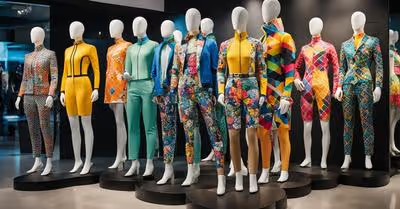























































































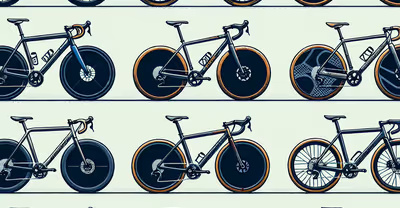

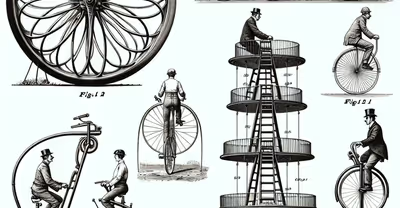




















































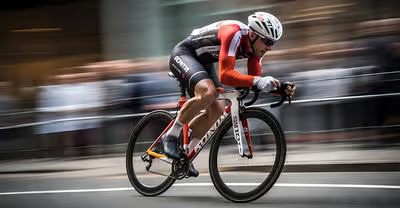












































































































































































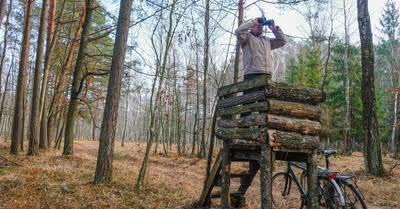





































































































































































































































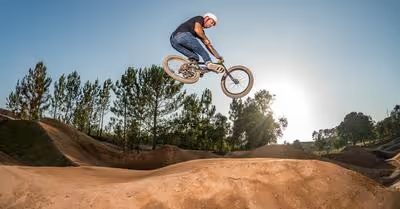








































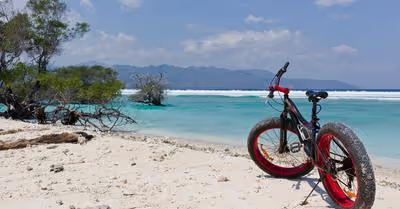


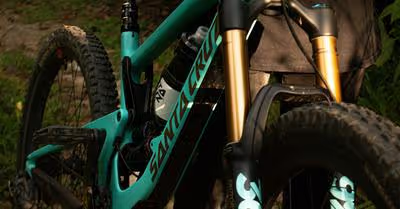


















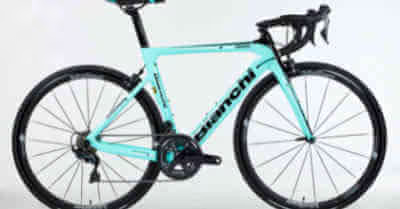



































.avif)
